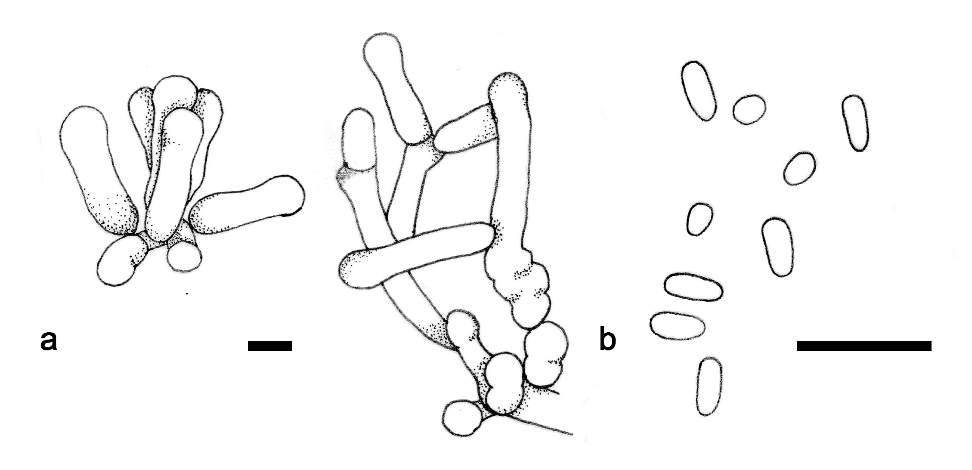Fungalpedia – Note 299, Hawksworthiomyces
Hawksworthiomyces Z.W. de Beer, Marinc. & M.J. Wingf.
Citation when using this entry: Perera et al. 2024 (in prep) – Fungalpedia, genera described in 2016.
Index Fungorum, Facesoffungi, MycoBank, GenBank, Fig. 1
Classification: Incertae sedis, Ophiostomatales, Diaporthomycetidae, Sordariomycetes, Pezizomycotina, Ascomycota, Fungi
De Beer et al. (2016) described the new genus Hawksworthiomyces based on Sporothrix lignivora (=Hawksworthiomyces lignivorus) as the type. The asexual morph of Hawksworthiomyces is characterized by mycelial with mononematous, micronematous or macronematous conidiophores. Conidiogenous cells are polyblastic, integrated or discrete and terminal or intercalary with denticulate apical part. Conidia are hyaline, aseptate and ellipsoidal to cylindrical. Secondary conidia are occasionally produced. The sexual morph is undetermined. In the analysis of LSU and ITS sequences Hawksworthiomyces formed a monophyletic lineage in Ophiostomatales distinct from other genera (De Beer et al. 2016). Hawksworthiomyces species are associated with bamboo chips, wood, fluvial sediments and fungus garden of Trachymyrmex septentrionalis (attine ant). The genus accommodates seven species (De Meyer et al. 2008; De Beer et al. 2016; Tan et al. 2022; Crous et al. 2023).
Type species: Hawksworthiomyces lignivorus (De Mey., Z.W. de Beer & M.J. Wingf.) Z.W. de Beer, Marinc. & M.J. Wingf.
Other accepted species: Species Fungorum, search Hawksworthiomyces
Figure 1 – Hawksworthiomyces lignivorus (CBS 119148, ex-type) a Conidia and denticles. b Various conidial shapes. Scale bars: a = 1 μm, b = 10 μm. Redrawn from De Meyer et al. (2008).
References
Entry by
Rekhani Hansika Perera, Center of Excellence in Fungal Research, Mae Fah Luang University, Chiang Rai, 57100, Thailand.
(Edited by Kevin D. Hyde, Samaneh Chaharmiri-Dokhaharani, & Achala R. Rathnayaka)
Published online 8 July 2024
